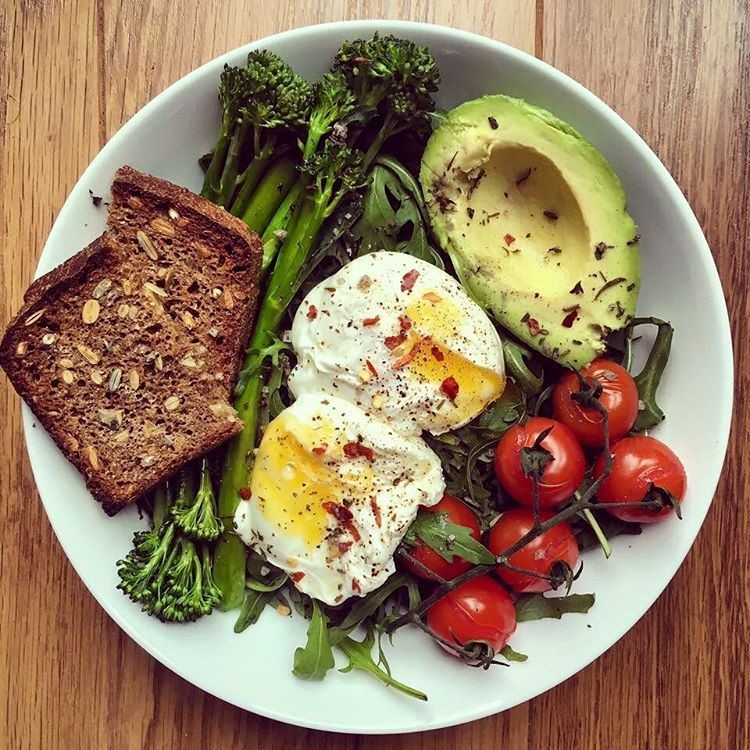There is no one-size-fits-all when it comes to nutrition. There are simply well-researched, basic principles, that if we consistently aim to utilise, will provide us with more nutrients, better health and lower risk of disease.
Sometimes it can seem TOO simple. But if you find yourself ignoring the “basic” principles of good nutrition, I challenge you to stop and ask yourself these questions:
1. Do I get 5-6 serves of veggies every single day?
2. Am I getting enough fibre every single day from an abundance of veggies, fruit, wholegrains, nuts, seeds, legumes, lentils and beans?
3. Do I consciously include a good quality, natural source of lean protein at each main meal and at snacks?
4. Am I unnecessarily restricting everyday foods or food groups, despite not having an intolerance or allergy?
If you are unsure about any of these questions (and let’s face it, 95% of Aussies are NOT eating enough vegetable every day!) then let’s bring it back to the basics and learn how to build a quality, nutritionally-balanced main meal.
Some of us enjoy measuring each and every gram of food that goes into our bodies, popping it into our phone app and keeping accountability and “balance” this way… But if you find this process at all tedious, overwhelming or obsessive, please know there is another way!
What this article will teach you is how to balance your main meals – mainly lunches, dinners and also some savoury breakfast’s – so that rather focusing on the grams of broccoli you put into your salad, you can focus your attention and energy on improving your nutrition. We will achieve this through optimising the nutrients in your diet, through balancing the types of foods you select to put on your plate … simply by eye-balling it – no apps required!
THE FIVE STEPS TO BUILDING A BALANCED MEAL
STEP 1 (and the most important step): Fill up half your plate with non-starchy vegetables or salad
Yes, the whole HALF! Why all the fuss over veg and salad, you ask? Not only are they low in calories (hello larger portion sizes!) but our veggies are filled with an abundance of vitamins, minerals and fibre that our bodies and minds need every single day to function at their absolute peak.
The main thing to note here is that non-starchy veggies are ANY vegetable except for potato, sweet potato and corn. Oh, and don’t forget to include a variety of veggie types, colours and cooking methods. The more we vary it up, the more nutrients we will get out of the meal!

STEP NUMBER 2: Fill ¼ of your plate up with a good quality, lean protein source
Whether you’re a carnivor
e, pescatarian or vegan, there are a wide variety of protein sources to choose from for this category. Think skinless chicken, turkey, lean beef, trimmed pork, white fish, salmon, tuna, tofu, tempeh, eggs, Greek yogurt, cottage cheese… the list goes on!
How much protein do you need at each meal, you ask? It depends on your protein requirements! If you have had a DEXA here with us, you would know what your daily protein aim should be and if you’re unsure, you may want to check in with a dietitian (or you can book in a scan or diet consult at MeasureUp).
Generally speaking, we should be aiming for at least 25-30g of protein at each main meal, with some individuals needing a little more to meet a higher requirement. Check out our Building a Balanced Meal resource (below) for more ideas of protein sources and how much you should be serving onto your plate at each meal!
Step 3: Fill ¼ of your plate up with complex carbohydrates
All carbs are NOT created equal! ‘Complex’ carbohydrates are given their name due to the intertwining nature of the sugar molecules that are strung together in long, complex chains. Compare this to those ‘simple’ carbohydrates whose chains are a lot less complex, faster and easier to break down and give us that ‘blood sugar spike’ we generally want to avoid.
As a rule of thumb, this group is formed from your less-refined whole grains, legumes/lentils/beans/pulses and starchy veggies (aka potato, sweet potato and corn). To get the most nutrition bang-for-your-buck, opt for grains that are darker and/or grainier. This indicates that the grain still contains the outer bran layer which is packed full of fibre, B-vitamins and minerals, as well as it’s inner ‘germ’ – the nutrition powerhouse of grains, boasting vitamin E, B-vitamins, minerals, essential fatty acids and phytochemicals. The whiter the grain (think white bread, pasta and rice), the more ‘simple’ the carbohydrate source, the faster your body will break it down, the larger your blood sugar spike, the less full you will be and the less nutrient-dense! Remember, brown is best!how-to-build-a-balanced-meal-mu-newsletter
Step 4: Add a thumb-size of healthy fats
Just like not all carbs were created equal, the same goes for dietary fats. Given that both healthy and unhealthy fats have over double the calorie content of protein and carbohydrates per gram, it is recommended to keep our portions relatively smaller when it comes to fats in the diet.
Focus on including thumb size portions of monounsaturated fats and omega-3 polyunsaturated fats to your meals. Mono’s include foods such as extra virgin olive oil, various types of nuts and seeds, nut butters and avocados. For your omega-3’s we want to include some walnuts, flaxseeds, chia seeds and hemp seeds (note we also get omega-3’s from our fatty fish such as salmon however we consider this more a ‘lean protein’ than a ‘healthy fat’ when balancing our meals!)
A word of warning here – you might find you don’t need to add much or any healthy fats if you have already used extra virgin olive oil in cooking your proteins or veggies, or have dressed your salad with it! If you want to optimise the inclusion of fats other than oil in your meals, try minimising the oil content or use spray oil to cook with.
Step 5: The flavour factor
No one wants to eat bland food. And why should we? We can not only make our food TASTE better but also OPTIMISE its nutrition by selecting certain natural flavours to enhance our meals. Use a wide variety of ground and fresh spices, dried and fresh herbs, lemon, lime, onion, garlic, chilli, vinegar, mustard, nutritional yeast, miso, pepper and a little sea salt. If using sauces and condiments, opt for ones lower in sodium and sugar. Ideal options will contain <120mg/100g of sodium and <5g/100g of sugar! Let’s get flavouring!
Balanced Meal Building In Action:
JORDAN KAIN (APD, MND, EXSPSC)
Dietitian and Exercise Scientist


